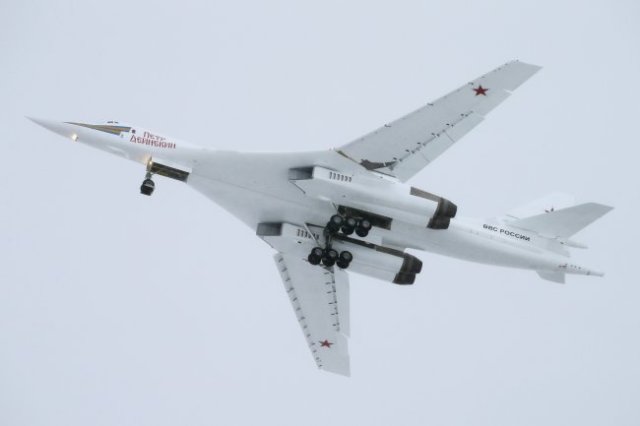The State Corporation "Rostec" has handed over the first Tu-160M missile carrier with new NK-32 engines of the 02 series for preliminary tests. They will be held at the flight test and finishing base of PJSC "Tupolev" in Zhukovsky, near Moscow. This was reported by almost all news agencies. Behind the lines of the news was an interesting and very revealing story of the mid-1990s.
When the Soviet Union adopted the Tu-160 strategic missile carrier in 1987, which received the name "White Swan" for its grace, it was not taken seriously overseas. They considered that the declared characteristics of the aircraft simply can not be implemented. But the more American experts studied this machine, which was facilitated by the collapse of the USSR, the more discouraged they became. It turned out that the Tu-160 really surpasses all the strategists of the US Air Force. First of all, the engines. Even in the "dashing nineties" it was impossible to get foreigners to study a Russian combat missile carrier. But the Americans found a perfectly legal loophole.
It is no secret that the civil supersonic Tu-144, which made its first flight back in 1968, became the forerunner of the military Tu-160. The first passengers of the Tu-144 were transported in the autumn of 1977, and in the summer of 1978, alas, passenger traffic on it was discontinued.
So, the company Boeing proposed to start implementing a project to create a joint Russian-American supersonic passenger aircraft of a new generation. To do this, the Americans, as stated, needed to carefully study the engines of our aircraft. Formally, the work was carried out not with the creator of combat aircraft-a private company Boeing, but with the state space agency NASA.
At the insistence of the Americans for research flights, instead of the regular civilian RD-36-51A engines, the Tu-144 with the tail number 77114 was installed with the NK-32-01 - exactly the same as the military Tu-160 had. They also installed a fuel system from the missile carrier and placed a huge amount of control and recording equipment on board, which recorded all the parameters of the flight and the operation of the engines.
Tests under a contract with NASA began in late 1996. For a year and a half, the aircraft made three dozen flights, including eight tests exclusively in the interests of the Boeing Corporation, which was negotiated by the contract. Thus, American specialists quite legally obtained all the characteristics of the engine and fuel system that the top-secret strategic Tu-160 possessed. And we made sure that our engines are the best.
The project of a joint passenger supersonic airliner did not take place as expected. Specialists from the United States, although they received the main characteristics of the NK-32-01 engine, could not use them to their advantage. Fortunately, they were not given the technology to manufacture these engines.
It is known from open sources: the upgraded Tu-160M missile carrier with the latest NK-32-02 engines completely surpasses the American analogues B-1A and B-1B in its flight and combat characteristics. After the complete modernization and digitalization of the board, the missile carrier of a virtually new generation under the name of the Tu-160M2 will simply be out of reach for American designers. And they will not be able to repeat the trick that they pulled off while hunting for the secrets of the Tu-160 at the end of the last century.
Sergey Ptichkin

